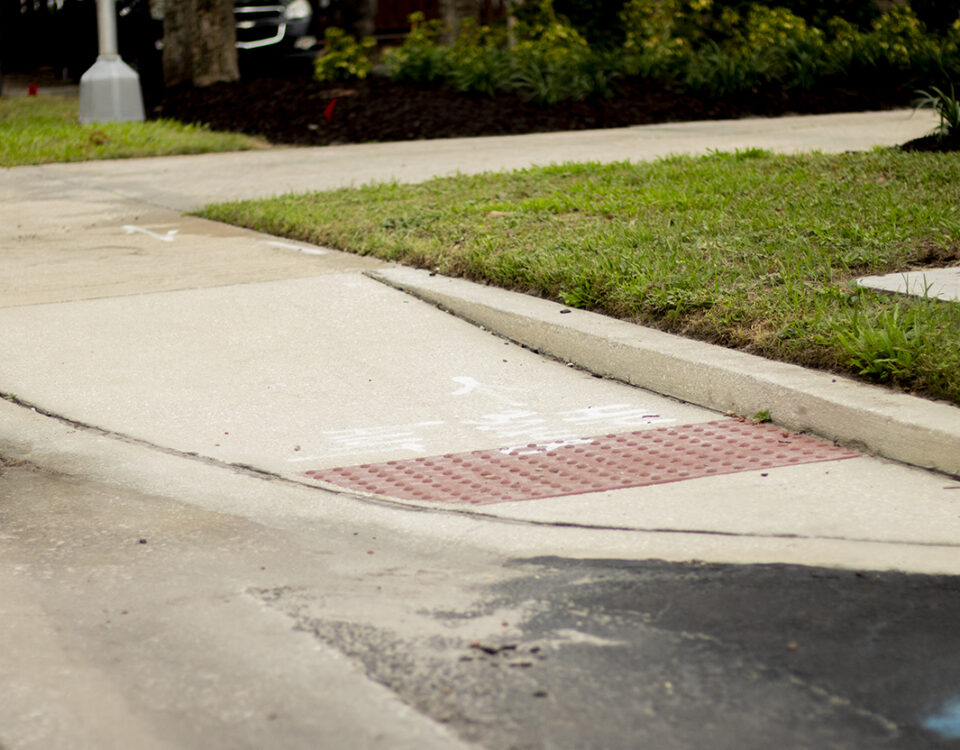Enhancing Restroom Accessibility: Installing Grab Bars in Toilet Stalls per the ADA
June 28, 2023Creating Accessible Spaces: Installing Offset Hinges to Widen Doorways in ADA Compliance
July 13, 2023The Americans with Disabilities Act (ADA) is a critical piece of legislation that seeks to ensure equal access for individuals with disabilities in public spaces. A crucial aspect of ADA compliance is installing accessible door latches. In this article, we’ll delve into why these latches are essential, provide step-by-step directions for installation, and explore the ADA standards and measurements that must be met to promote accessibility effectively.
At a Glance
- Accessibility: Installing accessible door latches ensures individuals with various abilities can enter and exit spaces independently, promoting equal access.
- Independence: Properly designed latches empower individuals with disabilities to navigate public spaces autonomously, fostering self-reliance.
- Safety: Accessible latches enhance safety by providing a means of egress for everyone, not just individuals with disabilities.
- Legal Requirement: The ADA mandates specific standards for accessible door latches to ensure fairness and accessibility.
- Inclusivity: Installing accessible door latches aligns with universal design principles, making spaces more welcoming for everyone, regardless of their abilities.
Step-by-Step Directions for Installing Accessible Door Latches:
- Gather Your Tools and Materials: Start by collecting the necessary tools and materials for installation. You’ll need a screwdriver, a drill, screws, the accessible door latch mechanism, and a measuring tape.
- Measure and Mark: Measure the height at which the accessible door latch should be installed. According to ADA guidelines, the latch should be mounted between 34 inches and 48 inches above the floor. Mark this height on the door.
- Pre-Drill Holes: Using the marked height, pre-drill holes for the screws that will secure the accessible door latch. Make sure the holes are level.
- Install the Latch Mechanism: Attach the accessible door latch mechanism using the provided screws. Ensure that the latch is aligned with the pre-drilled holes and is level.
- Test the Latch: Test the newly installed latch to ensure it functions correctly. It should be easy to grasp and operate with minimal effort.
- Provide Clear Signage: To assist individuals with visual impairments, consider providing clear signage indicating the location of the accessible door latch. This signage should include the International Symbol of Accessibility.
- Educate Staff and Users: Ensure that staff members and building users are aware of the newly installed accessible door latch and its purpose. Training can help promote proper use and accessibility awareness.
ADA Standards and Measurements:
ADA guidelines stipulate that accessible door latches should be mounted between 34 inches and 48 inches above the floor. This range ensures that individuals with various abilities, including those using wheelchairs or mobility aids, can easily reach and operate the latch. Additionally, accessible door latches should be operable with a closed fist and require no more than 5 pounds of force to operate.
Importance of Compliance:
Installing accessible door latches is not just about following regulations; it’s about promoting inclusivity and ensuring that everyone, regardless of their abilities, can access public spaces comfortably. Properly designed latches are crucial for individuals with disabilities, as they allow for equal participation in various aspects of life, such as education, employment, and community engagement.
Promoting Independence:
Accessible door latches empower individuals with disabilities to move independently, enhancing their self-reliance and overall quality of life. They can enter and exit spaces without requiring assistance, which is a significant boost to their autonomy.
Enhancing Safety:
Properly designed accessible door latches contribute to safety by providing a reliable means of egress for everyone. In the event of an emergency, accessible latches ensure that individuals can exit spaces quickly and easily.
In conclusion, installing accessible door latches is a vital step toward achieving a more accessible and inclusive society. It ensures accessibility, promotes independence, enhances safety, and demonstrates a commitment to the principles of the ADA. As we continue to adapt our public spaces, let us remember that barrier removal is more than just a modification; it is a tangible expression of our dedication to ensuring that everyone, regardless of their abilities, can access all areas with dignity and ease.



